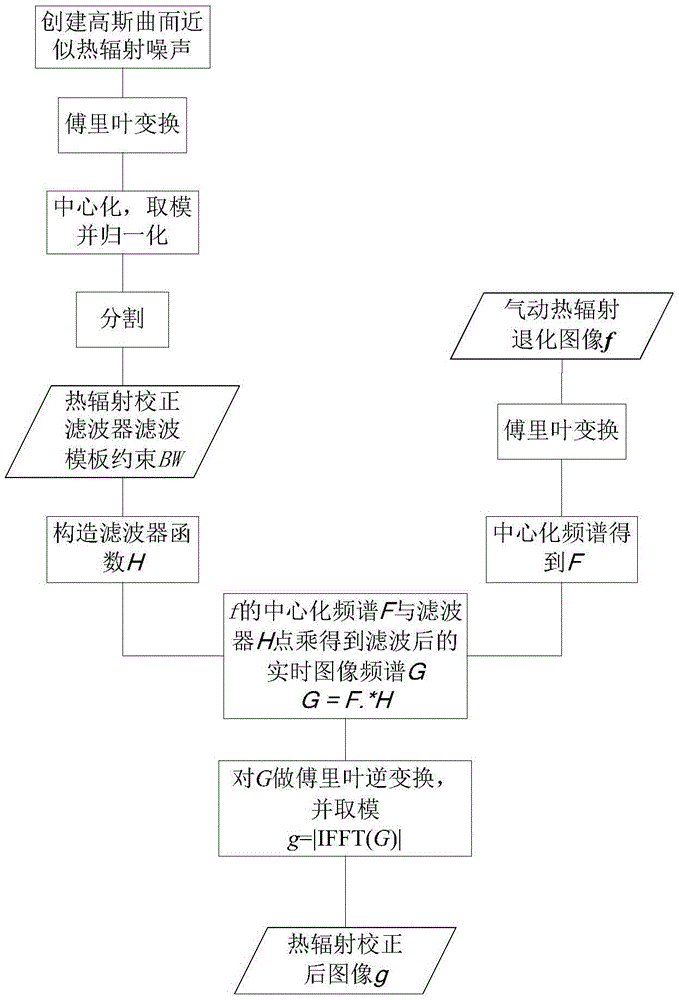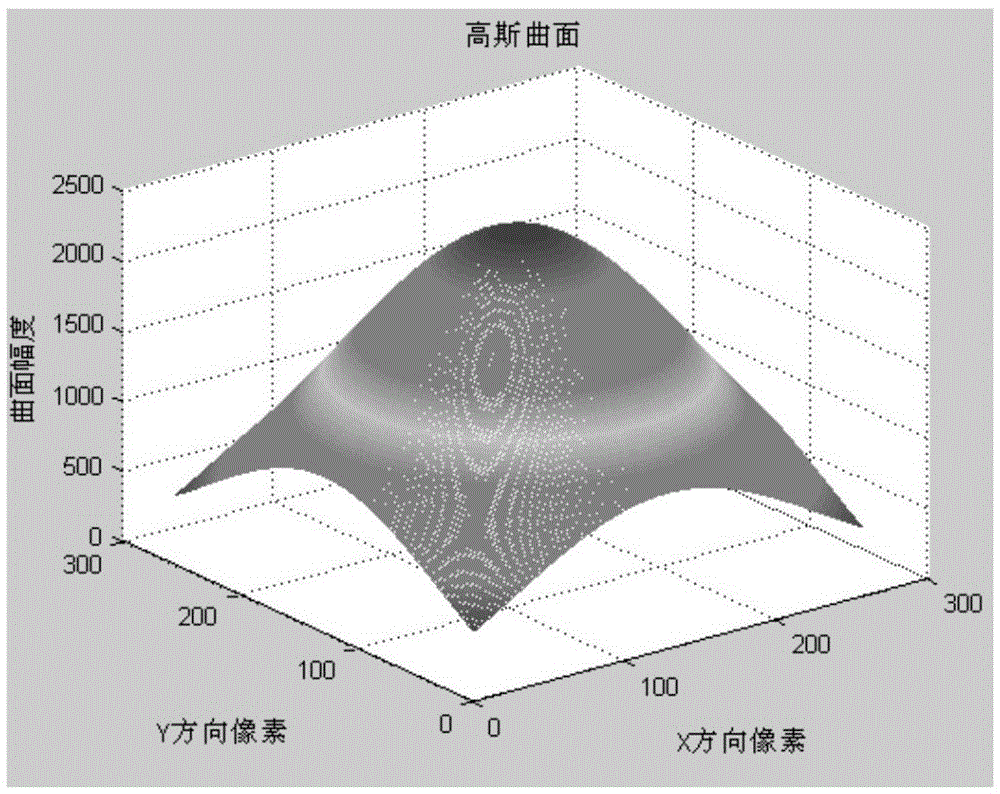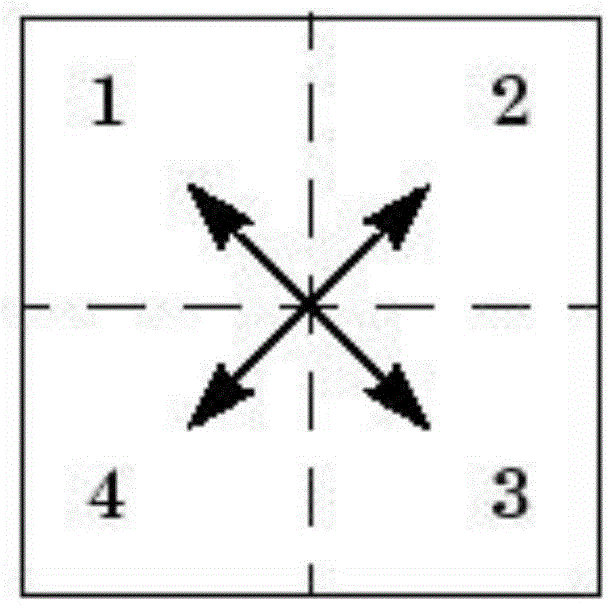Frequency domain correction method for pneumatic thermal radiation effect
An aerodynamic thermal radiation and frequency domain correction technology, applied in the field of interdisciplinary science, can solve the problems of increased background brightness, time-consuming, and complex calculations of infrared images, improve image quality and image signal-to-noise ratio, suppress thermal radiation noise, and reduce Effects of Computational Complexity
- Summary
- Abstract
- Description
- Claims
- Application Information
AI Technical Summary
Problems solved by technology
Method used
Image
Examples
Embodiment Construction
[0052] In order to make the object, technical solution and advantages of the present invention clearer, the present invention will be further described in detail below in conjunction with the accompanying drawings and embodiments. It should be understood that the specific embodiments described here are only used to explain the present invention, not to limit the present invention.
[0053] The method of the present invention compares and analyzes a series of aerothermal radiation degradation images and original reference images, such as Figure 7-10 As shown, it is concluded that the thermal radiation noise presents a low-frequency distribution in the aerothermal radiation degradation image, and its shape is similar to a Gaussian surface, and the spectrum distribution is regular and orderly, showing a "cross" shape, and the "cross" has a tendency to gradually attenuate to the surroundings.
[0054] Therefore, based on the above analysis, it can be known that the thermal radiatio...
PUM
 Login to View More
Login to View More Abstract
Description
Claims
Application Information
 Login to View More
Login to View More - R&D
- Intellectual Property
- Life Sciences
- Materials
- Tech Scout
- Unparalleled Data Quality
- Higher Quality Content
- 60% Fewer Hallucinations
Browse by: Latest US Patents, China's latest patents, Technical Efficacy Thesaurus, Application Domain, Technology Topic, Popular Technical Reports.
© 2025 PatSnap. All rights reserved.Legal|Privacy policy|Modern Slavery Act Transparency Statement|Sitemap|About US| Contact US: help@patsnap.com



